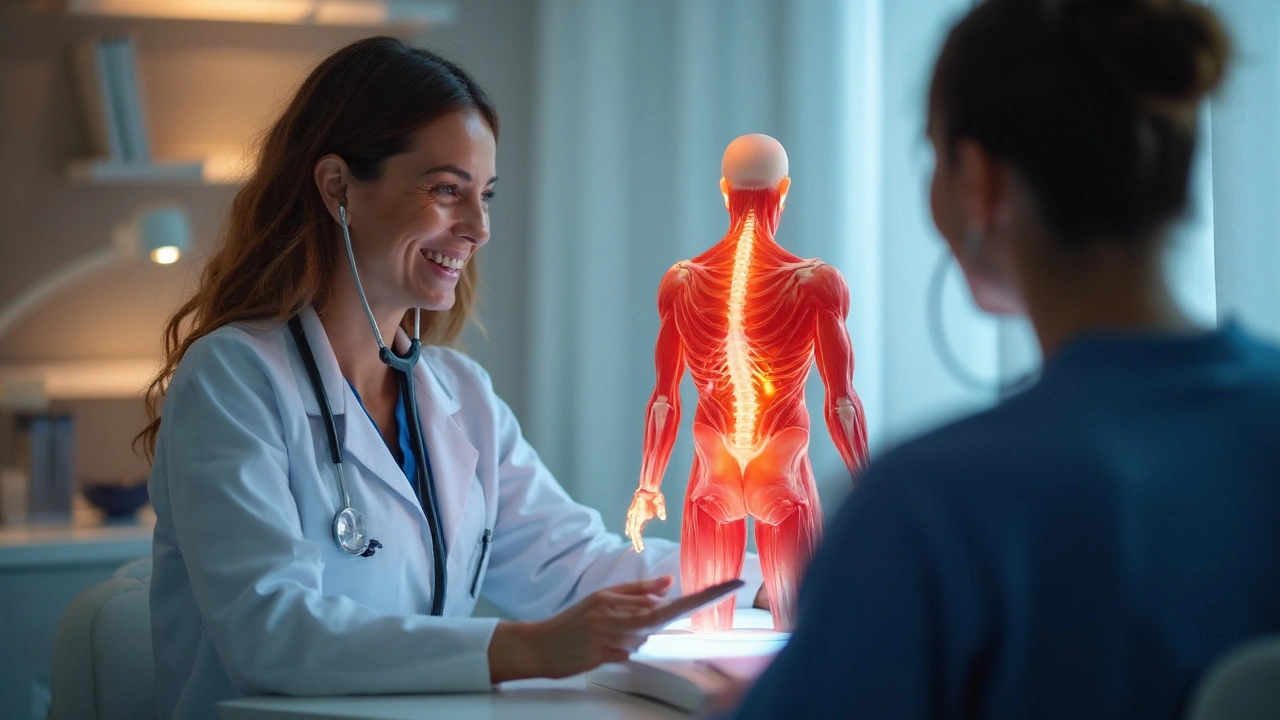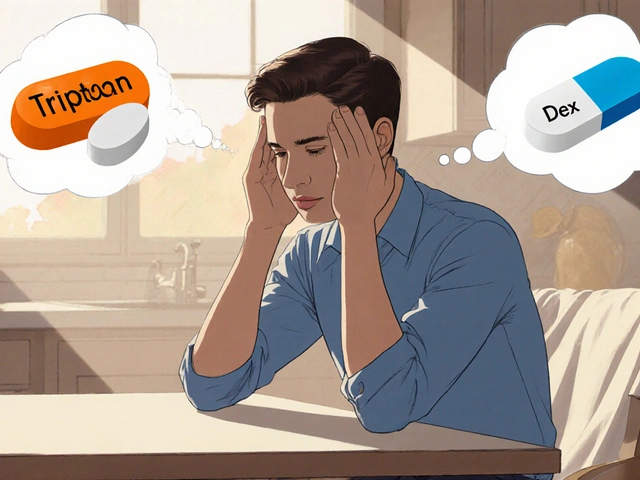Muscle aches are uncomfortable sensations that develop in skeletal muscle tissue, ranging from a mild throbbing to a sharp stabbing feeling. They often signal that something in the body needs attention, whether it’s a simple workout overload or an underlying medical issue.
Why Do Muscles Hurt? The Core Mechanisms
Understanding the root cause of any ache starts with the biology of muscle tissue. Muscles contract thanks to fibers called muscle fibers, which rely on electrolytes, oxygen, and waste‑clearance pathways to function smoothly. When any of these elements are disrupted, pain signals travel via peripheral nerves to the brain.
Common Everyday Triggers
Most people experience muscle aches after activities that push the body beyond its usual limits. Here are the top everyday culprits:
- Delayed Onset Muscle Soreness (DOMS) - a microscopic tearing of muscle fibers that typically appears 12‑48hours after intense or unfamiliar exercise.
- Muscle strain - a tear in muscle fibers or tendons caused by sudden overstretching or overload.
- Myofascial trigger point - a hyper‑irritable spot in a tight band of muscle that can refer pain to other areas.
- Electrolyte imbalance - low levels of potassium, magnesium, or calcium that impair muscle contraction and relaxation.
- Dehydration - reduced fluid volume that hampers waste removal and raises the risk of cramps.
When Pain Signals Something More Serious
Not all aches are just a sign you need a better warm‑up. Certain patterns point to deeper health concerns:
- Inflammation associated with autoimmune disorders (e.g., polymyalgia rheumatica) can cause persistent, morning‑stiff muscle pain.
- Rhabdomyolysis - a rapid breakdown of muscle tissue that releases myoglobin into the bloodstream and can lead to kidney damage. It often follows extreme exertion, heatstroke, or certain medications.
- Infections such as influenza or COVID‑19 frequently produce generalized muscle aches as part of the systemic inflammatory response.
- Neuropathic conditions (e.g., sciatica) where nerve compression creates sharp, radiating muscle discomfort.
Comparing the Main Causes
| Cause | Typical Onset | Pain Quality | Duration | First‑Line Management |
|---|---|---|---|---|
| DOMS | 12‑48h after activity | Deep, achy, stiff | 3‑7days | Gentle movement, foam rolling, ibuprofen if needed |
| Muscle strain | During activity | Sharp, localized | Days‑weeks | RICE (rest, ice, compression, elevation), physical therapy |
| Trigger point | Gradual, often unrelated to recent exercise | Throbbing, may radiate | Persistent, weeks‑months | Massage, dry needling, stretching |
| Inflammation (autoimmune) | Morning or after prolonged inactivity | Stiff, dull | Chronic | Low‑dose steroids, disease‑modifying agents, physician supervision |
| Rhabdomyolysis | Immediately or within hours of extreme stress | Severe, burning | Acute, medical emergency | IV fluids, hospital monitoring |

How to Diagnose the Source of Your Ache
Pinpointing the cause doesn’t always require a doctor, but certain steps can narrow the field:
- Ask yourself when the pain started and what you were doing.
- Note the exact location and whether the pain radiates.
- Check for accompanying signs: swelling, redness, fever, or dark urine (a red flag for rhabdomyolysis).
- Consider recent changes - new workouts, medication, or illness.
- If the ache persists beyond two weeks, feels worsening, or limits daily activities, seek professional evaluation.
Practical Relief Strategies
Regardless of the underlying cause, several evidence‑based measures can ease discomfort:
- Hydration: Aim for 2-3L of water daily; electrolytes can be added with sports drinks or foods rich in potassium (bananas, potatoes).
- Active recovery: Light movement, such as walking or swimming, promotes blood flow and clears metabolic waste.
- Heat therapy after the first 48hours helps relax tight fibers; ice in the acute phase reduces inflammation.
- Targeted stretching: Hold each stretch for 30seconds, focusing on the painful muscle group.
- Over‑the‑counter NSAIDs (ibuprofen, naproxen) can lower pain and swelling, but they’re not a long‑term solution.
- Professional interventions: Massage, physiotherapy, or osteopathic care address trigger points and imbalances.
When to Get Medical Help
While most muscle aches resolve with self‑care, these warning signs merit prompt medical attention:
- Severe pain that doesn’t improve with rest.
- Swelling or bruising that spreads quickly.
- Dark-colored urine, indicating possible rhabdomyolysis.
- Fever, chills, or unexplained weight loss accompanying the pain.
- Persistent stiffness that interferes with sleep or daily tasks for more than three weeks.
In such cases, a clinician may order blood tests (CK levels for muscle damage), imaging (MRI for deep strains), or refer you to a specialist.
Connecting to the Bigger Health Picture
Muscle aches sit at the intersection of fitness, nutrition, and medical health. They link to broader topics like:
- Exercise recovery - protocols that prevent recurring soreness.
- Nutrition for muscle health - protein intake, anti‑inflammatory foods, and micronutrient balance.
- Sleep quality - the role of deep REM cycles in tissue repair.
Exploring those connections can turn occasional aches into valuable feedback about your overall well‑being.

Frequently Asked Questions
What is the difference between DOMS and a muscle strain?
DOMS is a delayed, diffuse soreness that peaks 24‑48hours after unaccustomed exercise and usually resolves in a week. A strain is an acute, sharp injury caused by overstretching or overloading a specific muscle or tendon, often presenting with immediate pain, swelling, and limited function.
Can dehydration really cause muscle aches?
Yes. When the body lacks water, blood volume drops, impairing the delivery of oxygen and removal of metabolic waste from muscles. This creates a cramping environment that feels like a deep ache, especially during or after activity.
Are NSAIDs safe for regular use against muscle pain?
Occasional short‑term use is generally safe for most adults, but chronic reliance can irritate the stomach lining, affect kidney function, and blunt the natural inflammation needed for healing. It’s best to combine them with physical therapies and limit dosage.
How can I tell if my muscle ache is a sign of rhabdomyolysis?
Key red flags include sudden, severe muscle pain, swelling, and dark, tea‑colored urine. Blood tests will show a markedly elevated creatine kinase (CK) level. If you notice these symptoms, seek emergency care immediately.
What role do trigger points play in chronic muscle aches?
Trigger points are hyper‑irritable nodules within tight bands of muscle. They can generate localized pain and refer discomfort to other areas, perpetuating a cycle of stiffness and soreness. Techniques like dry needling, massage, and specific stretching can deactivate them.




Catherine Zeigler
September 25 2025Congratulations on taking the first step toward mastering your body's signals.
Understanding muscle aches is like learning a new language that your muscles use to speak to you.
When you feel that gentle throb after a workout, think of it as a friendly reminder that your fibers are rebuilding stronger.
Staying hydrated is the foundation, because water carries the electrolytes that power every contraction.
Add a pinch of potassium‑rich foods such as bananas or sweet potatoes, and you’ll notice the difference in recovery speed.
Gentle movement, like a light walk or a few minutes of yoga, promotes blood flow and clears metabolic waste.
Foam rolling after the initial 48‑hour window can break up lingering tension and improve tissue elasticity.
If the ache turns sharp or you notice swelling, it may be a strain, and resting the muscle with ice for the first 24 hours is wise.
Remember that sleep is your overnight therapist; deep REM cycles release growth hormone that repairs muscle fibers.
A balanced protein intake – about 0.8 to 1 gram per pound of body weight – supplies the building blocks for repair.
For chronic stiffness in the morning, consider a brief session of dynamic stretching before you rise.
When you suspect trigger points, apply steady pressure for 30‑60 seconds and then release; this often reduces referral pain.
Always listen to red‑flag signs like dark urine, fever, or pain that worsens despite rest, because they can indicate serious conditions.
Consulting a healthcare professional early can prevent complications such as rhabdomyolysis.
Keep a simple log of your workouts, hydration, and soreness levels, and you’ll soon spot patterns that guide smarter training.